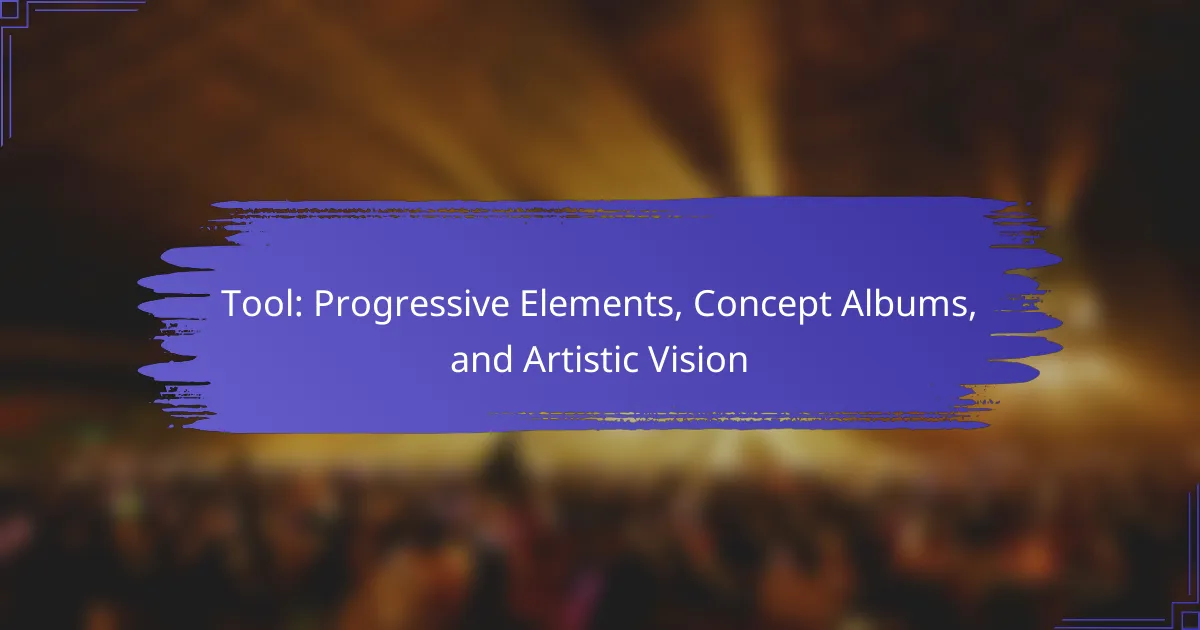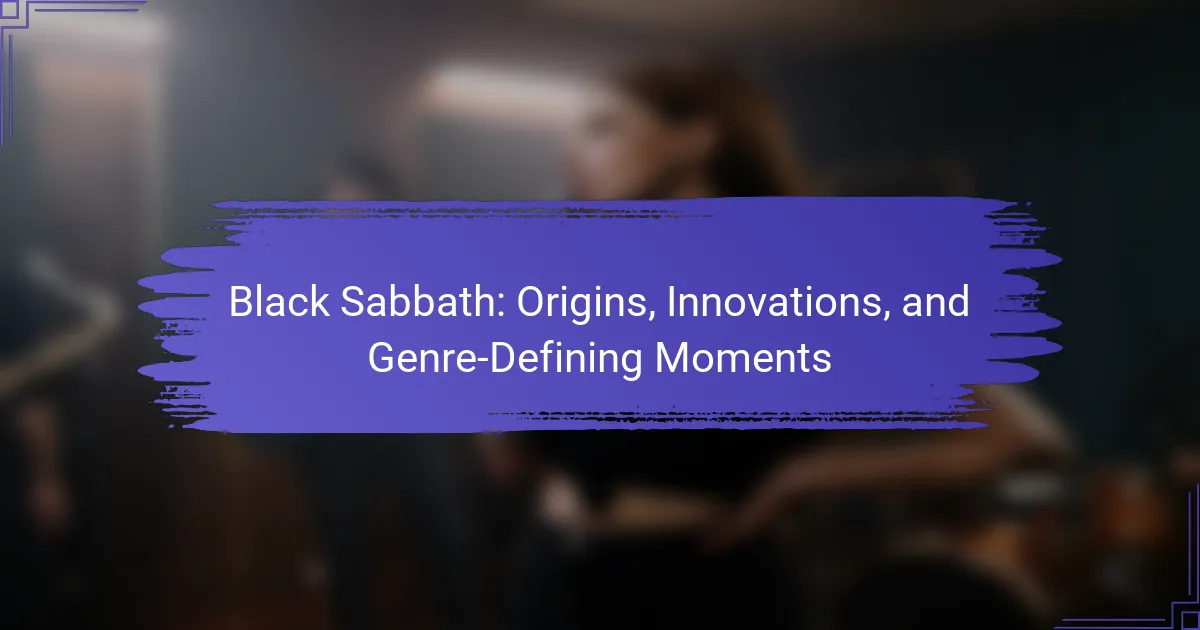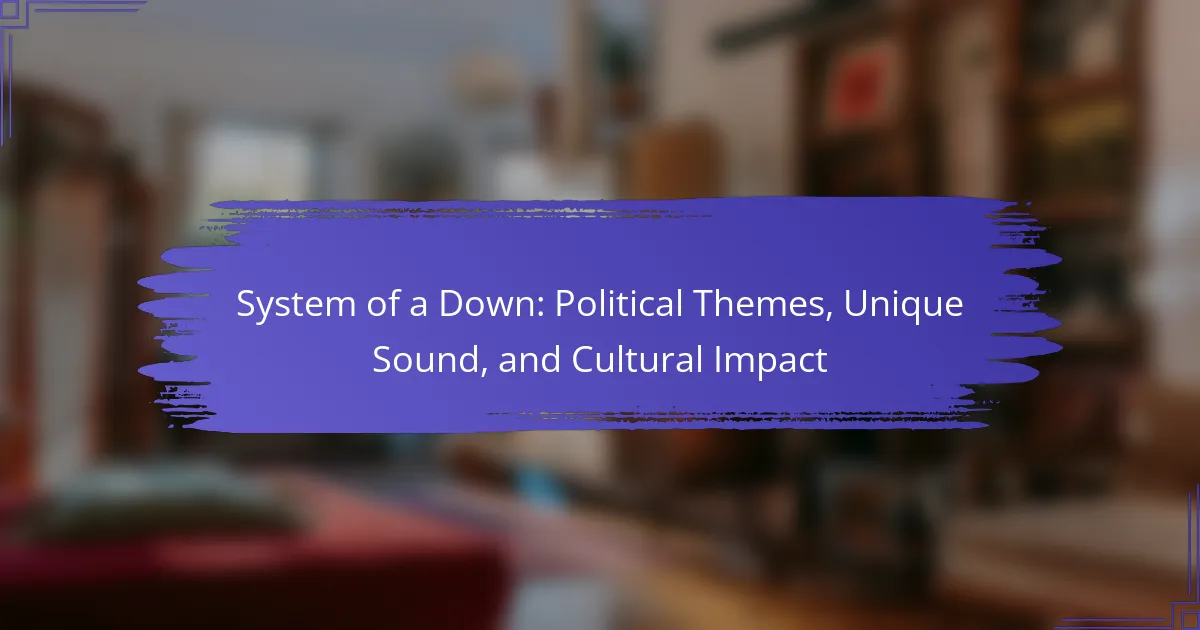Slipknot’s unique masked identity amplifies their aggressive music and performances, fostering a strong fan culture rooted in shared experiences. Their anonymity allows for unfiltered emotional expression, creating a deep connection among listeners. The band’s theatricality and intense energy resonate across different regions, reflecting cultural influences while maintaining their core identity. Additionally, Slipknot’s impact on the metal genre has reshaped audience engagement and opened discussions about mental health within the community.
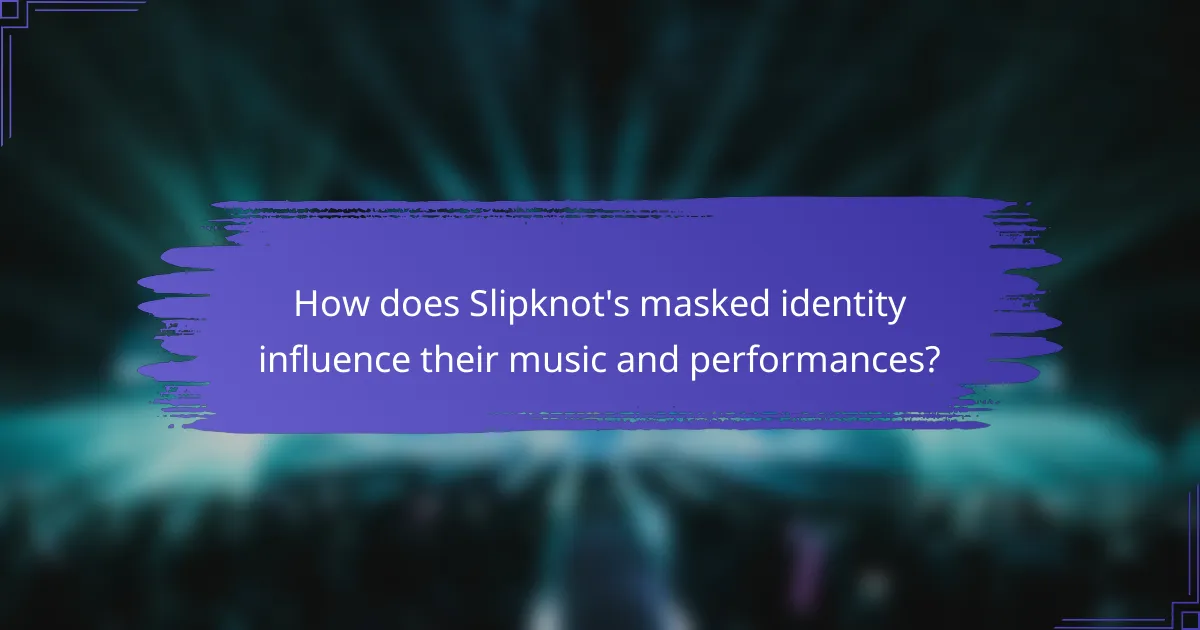
How does Slipknot’s masked identity influence their music and performances?
Slipknot’s masked identity significantly enhances their music and performances by creating a distinct persona that embodies aggression and anonymity. This anonymity allows for unfiltered expression, enabling fans to connect deeply with the raw emotions conveyed in their music. The masks serve as a unique attribute, symbolising the band’s collective identity over individual fame. Additionally, the theatricality of their performances, characterised by intense energy and visual spectacle, reinforces their aggressive sound and fosters a strong fan culture. This culture thrives on shared experiences, as the masks create a sense of belonging and unity among fans.
What are the psychological effects of wearing masks for the band members?
Wearing masks can lead to significant psychological effects for Slipknot band members. Masks can enhance feelings of anonymity, allowing members to express aggression and creativity without personal repercussions. This masked identity fosters a unique bond among members, contributing to a collective performance dynamic. Additionally, masks can influence how members perceive themselves and their roles within the band, enhancing their stage presence and emotional connection with fans.
How do fans interpret the symbolism behind the masks?
Fans interpret the symbolism behind Slipknot’s masks as representations of individuality, trauma, and societal critique. Each mask reflects a unique persona, allowing members to express their inner struggles and connect with fans on a deeper level. The aggressive imagery often symbolises the band’s confrontation with personal and collective demons, making the masks a powerful tool for identity and emotional release. This connection fosters a sense of community among fans, who resonate with the themes of chaos and resilience inherent in the masked identities.
Which unique masks have defined the band’s evolution over time?
The unique masks of Slipknot have significantly shaped the band’s evolution, reflecting their artistic growth. Each member’s mask symbolises their persona and the band’s evolving themes.
Core masks like the original clown mask represent aggression and chaos, while newer designs incorporate intricate details, showcasing artistic innovation. For example, Corey Taylor’s evolving masks reflect his personal journey and vocal evolution.
The masks also foster a deep connection with fans, enhancing Slipknot’s identity as a collective. This unique attribute of mask design has become a vital part of their live performances and fan culture, making each mask a representation of the band’s ongoing narrative.
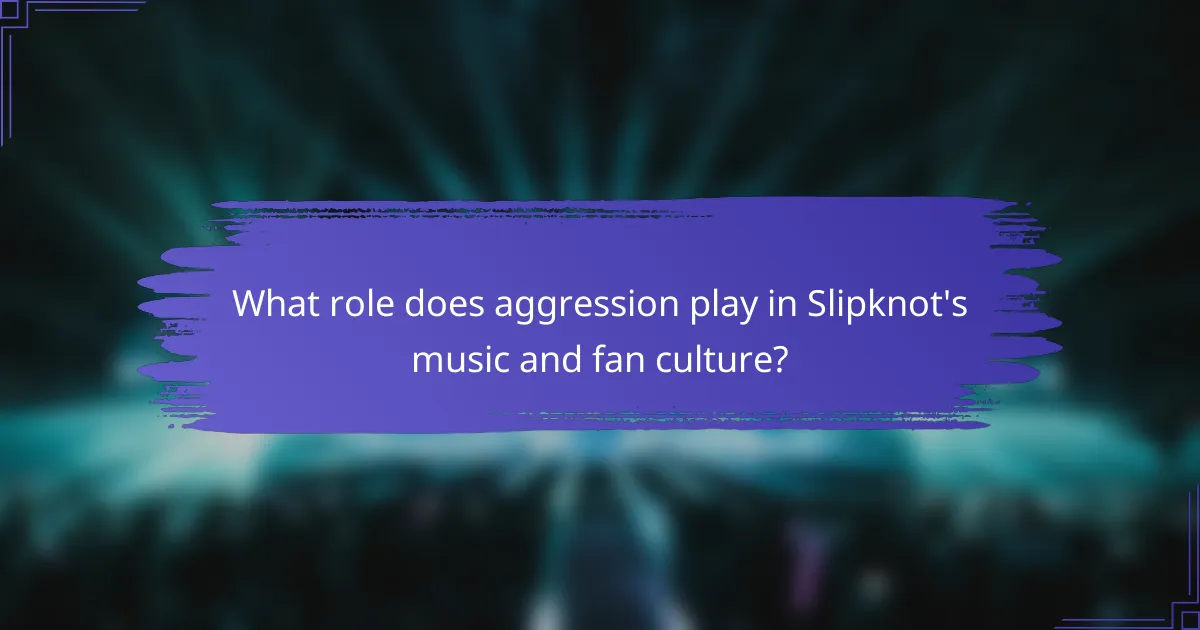
What role does aggression play in Slipknot’s music and fan culture?
Aggression is a central element in Slipknot’s music and fan culture, driving emotional connection and community. The band’s intense sound and aggressive lyrics resonate with fans seeking an outlet for their own frustrations. This shared experience fosters a unique bond among listeners, creating a sense of belonging. Slipknot’s masked identity enhances this connection, allowing fans to express their own aggression while uniting under a common symbol. The rare attribute of anonymity in their performances further amplifies the cathartic experience, making aggression a powerful force in their culture.
How do themes of anger and violence resonate with listeners?
Themes of anger and violence resonate deeply with listeners of Slipknot, as they provide an outlet for emotional expression. The band’s masked identity enhances this connection, allowing fans to engage with the music without judgment. Aggression in their lyrics and performances reflects shared frustrations, creating a sense of community among fans. This unique attribute of Slipknot fosters a cathartic experience, where listeners can confront their own feelings through the band’s powerful sound and imagery.
What are the most aggressive songs in Slipknot’s discography?
The most aggressive songs in Slipknot’s discography include “People = Shit,” “Duality,” and “Psychosocial.” These tracks exemplify the band’s signature intensity and raw energy.
“People = Shit” features relentless percussion and aggressive lyrics, making it a fan favourite for its cathartic power. “Duality” combines heavy guitar riffs with an anthemic chorus, showcasing the band’s ability to blend aggression with melody. “Psychosocial” stands out with its driving rhythm and complex structure, further solidifying Slipknot’s reputation for aggressive soundscapes.
Other notable mentions are “The Heretic Anthem” and “Left Behind,” both characterised by their heavy instrumentation and fierce vocal delivery, embodying the band’s aggressive ethos.
How do live performances amplify feelings of aggression among fans?
Live performances amplify feelings of aggression among fans by creating an intense, immersive atmosphere. The energy of Slipknot’s music, combined with their theatrical performances, encourages cathartic release. Fans often feel a collective identity, enhancing emotional responses. This shared experience can lead to increased aggression as individuals express their feelings through movement and interaction. The band’s unique use of masks and costumes further intensifies this connection, allowing fans to embrace their darker emotions in a safe environment.
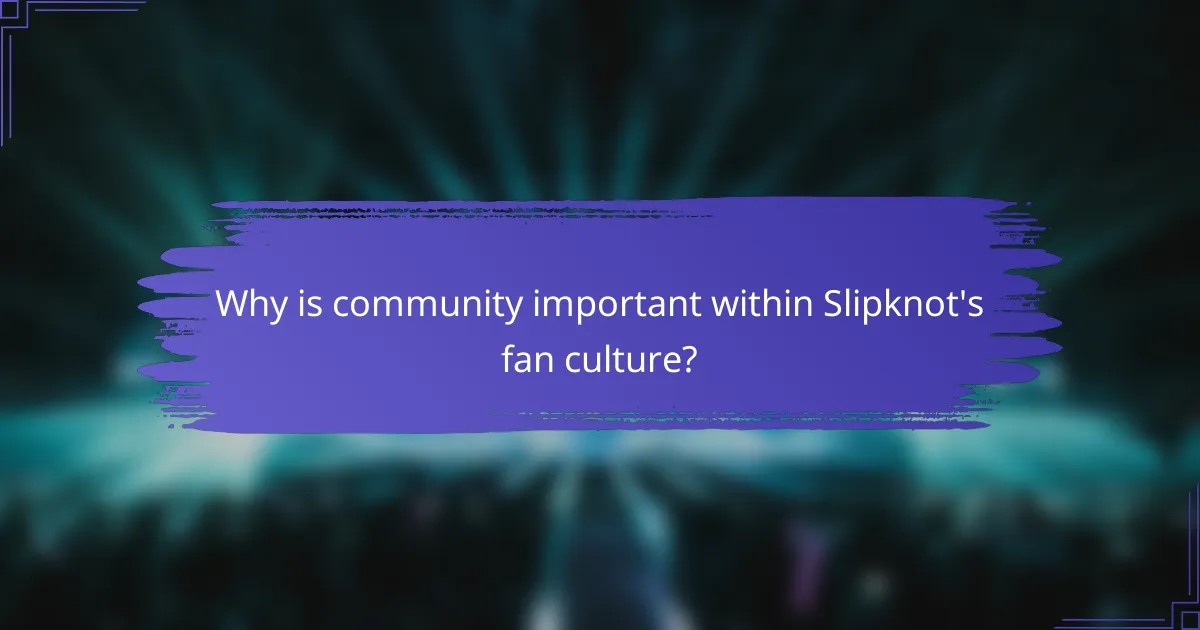
Why is community important within Slipknot’s fan culture?
Community is vital within Slipknot’s fan culture as it fosters a sense of belonging and shared identity. Fans connect through their mutual appreciation for the band’s aggressive music and unique masked personas. This connection enhances emotional support, allowing fans to express their struggles and triumphs together. Events like concerts and fan gatherings further solidify these bonds, creating a collective experience that is both empowering and cathartic. The rarity of such intense community dynamics in music fandoms makes Slipknot’s culture particularly unique and impactful.
What are the key characteristics of the Slipknot fanbase?
The Slipknot fanbase is characterised by intense loyalty, a sense of community, and a shared appreciation for the band’s unique aesthetic. Fans often express their passion through distinctive fashion choices, such as wearing masks and band merchandise. This visual identity reinforces their connection to the band’s themes of aggression and individuality. Additionally, the fan culture is marked by a strong presence at live events, where the energy and camaraderie among fans create a vibrant atmosphere. The unique attribute of this fanbase is its diverse demographic, spanning various ages and backgrounds, united by their love for Slipknot’s music and message.
How do fan interactions during concerts enhance the experience?
Fan interactions during concerts significantly enhance the experience by creating a sense of community and engagement. Slipknot’s unique masked identity fosters a deep connection between the band and fans, amplifying emotions during performances. The aggression displayed in their music encourages cathartic release, with fans participating through singing, moshing, and crowd surfing. This dynamic interaction transforms concerts into immersive experiences, where fans feel like integral parts of the show. Ultimately, these interactions elevate the overall atmosphere, making each concert memorable and impactful for both the band and the audience.
Which events or gatherings foster a sense of belonging among fans?
Events and gatherings that foster a sense of belonging among Slipknot fans include concerts, festivals, and fan conventions. These occasions create a communal experience, allowing fans to connect over shared interests and values. Concerts, with their high-energy performances, encourage collective participation and emotional release. Festivals often feature multiple bands, enhancing the sense of community among diverse music lovers. Fan conventions provide opportunities for deeper interactions, such as meet-and-greets and discussions about the band’s impact. These gatherings reinforce fan identity, creating lasting bonds through shared experiences and a unique culture centred around Slipknot’s music and message.
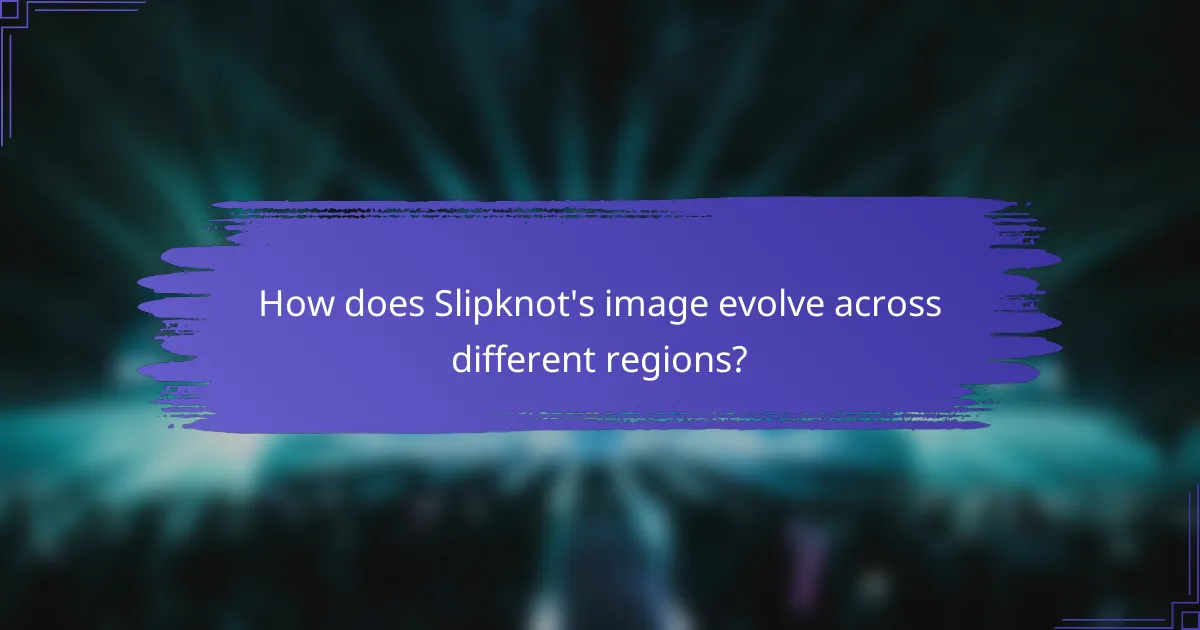
How does Slipknot’s image evolve across different regions?
Slipknot’s image evolves significantly across different regions, reflecting cultural influences and fan expectations. In North America, their aggressive persona and theatrical performances are prominent, emphasising raw energy. European audiences often appreciate the band’s artistic depth, leading to elaborate stage designs and more intricate storytelling. In Asia, Slipknot’s image combines aggression with a focus on community, fostering a strong connection with fans through interactive experiences. These regional adaptations highlight Slipknot’s unique ability to resonate with diverse audiences while maintaining their core identity.
What regional variations exist in Slipknot’s fan engagement strategies?
Slipknot employs diverse fan engagement strategies tailored to regional cultures. In North America, they emphasise intense live performances and community-focused events. In Europe, they leverage social media campaigns and exclusive merchandise to connect with fans. In Asia, they focus on localised content and collaborations with regional artists to enhance relatability. These strategies reflect unique cultural attributes, fostering a deeper connection with their global fanbase.
How do cultural contexts influence the interpretation of their music?
Cultural contexts significantly shape how audiences interpret Slipknot’s music. The band’s aggressive sound and masked identities resonate differently across various cultures, reflecting local attitudes towards rebellion and individuality.
For example, in the United States, Slipknot’s themes of anger and alienation connect with youth facing societal pressures. In contrast, in countries with stricter cultural norms, their music may be seen as a form of protest, challenging authority and conformity.
Moreover, Slipknot’s fan culture emphasises community and shared experiences, which can vary widely. In some regions, fans may view the band’s music as a therapeutic outlet, while in others, it may serve as a rallying cry for social change.
Overall, the interpretation of Slipknot’s music is deeply influenced by cultural contexts, making it a unique expression of global youth culture.
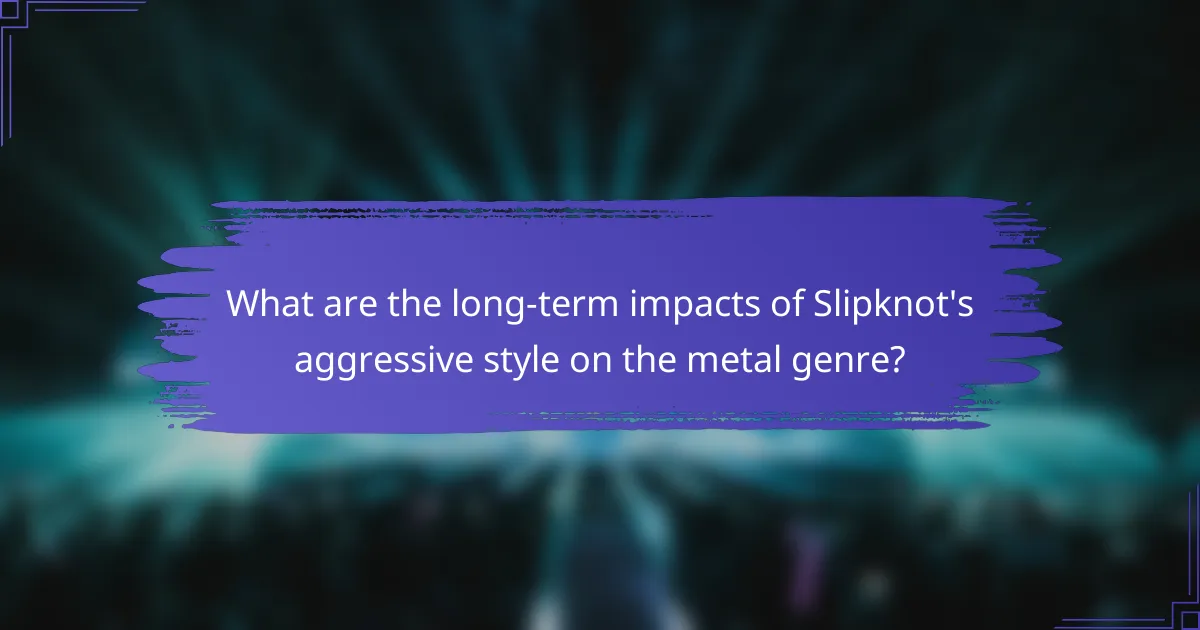
What are the long-term impacts of Slipknot’s aggressive style on the metal genre?
Slipknot’s aggressive style has significantly influenced the metal genre by pushing boundaries and redefining performance. Their unique combination of heavy instrumentation, theatricality, and intense live shows has inspired countless bands. This shift led to a rise in the popularity of extreme metal subgenres, such as nu-metal and metalcore, which incorporate similar aggressive elements.
The band’s masked identity fosters a sense of community among fans, creating a strong, dedicated following. This fan culture has encouraged other metal bands to adopt similar approaches to branding and audience engagement. As a result, Slipknot’s impact extends beyond music, shaping the overall metal scene and its cultural dynamics.
Moreover, Slipknot’s emphasis on emotional expression through aggression has opened discussions about mental health within the genre. Their lyrics often address personal struggles, resonating with fans and encouraging openness. This has led to a more inclusive environment in metal, where vulnerability is embraced alongside aggression.
In summary, Slipknot’s long-term impact on the metal genre includes the evolution of musical styles, enhanced fan engagement strategies, and a shift towards emotional authenticity.
Which bands have been influenced by Slipknot’s approach to music and performance?
Several bands have drawn inspiration from Slipknot’s intense music and theatrical performances. Notable examples include Korn, who share a similar aggressive sound and emotional depth. Other bands like Bring Me the Horizon and Motionless In White have adopted Slipknot’s visual aesthetics and stage presence. Additionally, Ghost and Trivium have incorporated elements of Slipknot’s fan engagement strategies, enhancing their own performance dynamics. This influence underscores Slipknot’s role in shaping modern heavy music culture.
How has Slipknot’s aggression shaped the evolution of metal subgenres?
Slipknot’s aggression has significantly influenced the evolution of metal subgenres by introducing intense emotional expression and theatricality. Their unique blend of aggressive sound and masked identity has shaped genres like nu-metal and metalcore. The band’s emphasis on raw energy and chaotic performances has inspired countless artists, pushing boundaries within the metal genre. This aggression not only resonates with fans but also fosters a strong sense of community and identity among listeners, further solidifying Slipknot’s impact on the metal scene.
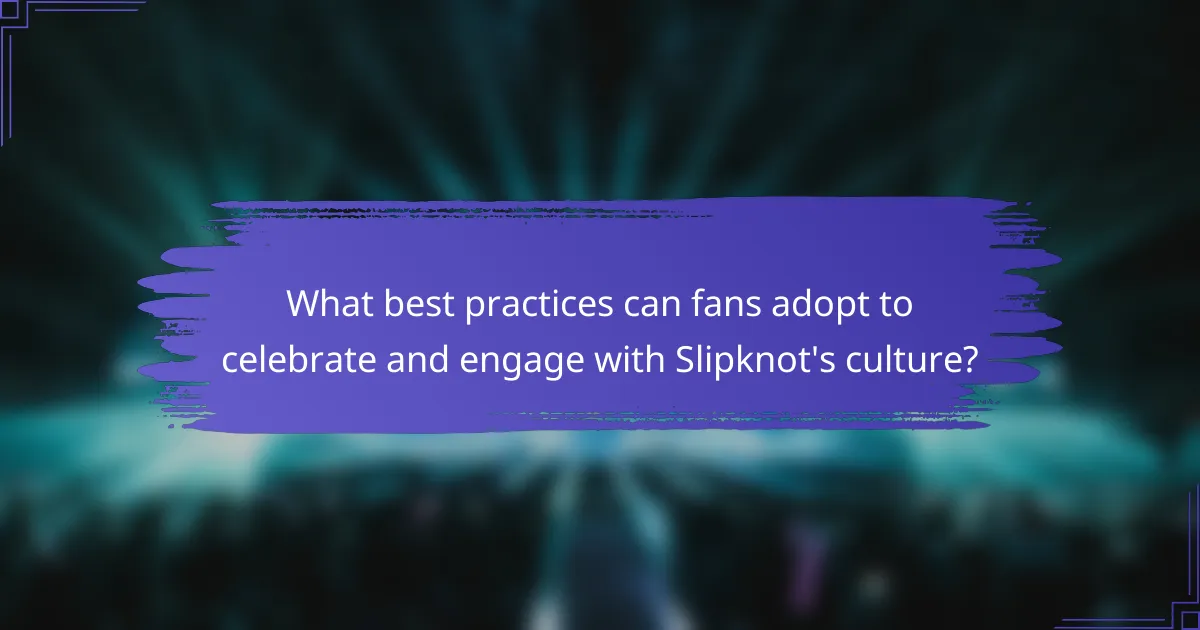
What best practices can fans adopt to celebrate and engage with Slipknot’s culture?
Fans can celebrate and engage with Slipknot’s culture by adopting several best practices. First, attending live performances fosters community and shared experiences. Second, participating in online forums and social media groups allows fans to discuss music, lyrics, and band news. Third, wearing Slipknot merchandise, such as masks and apparel, helps express identity and connection to the band. Fourth, creating and sharing fan art or covers showcases creativity and passion for the music. Lastly, engaging in charitable activities associated with the band reinforces the values of unity and support within the fanbase.
How can fans create inclusive environments at concerts?
Fans can create inclusive environments at concerts by fostering respect and understanding among attendees. Encouraging open communication and positive interactions enhances the overall experience.
Fans should actively promote acceptance of diverse identities, ensuring everyone feels welcome. This can include advocating for safe spaces and supporting initiatives that celebrate various backgrounds.
Engagement with the band and other fans can also help. For instance, fans can share personal stories or experiences related to the music, promoting a sense of community.
Additionally, organising pre-show meetups or discussions can strengthen bonds and create a more inclusive atmosphere. This approach allows fans to connect over shared interests and values, reinforcing a supportive environment.
What are common mistakes to avoid when engaging with the Slipknot community?
To engage positively with the Slipknot community, avoid being disrespectful, dismissing their culture, or criticising members’ preferences. Respect the band’s unique identity and the passion of its fans.
Common mistakes include:
– Disregarding the significance of masks and personas.
– Making negative comments about the music or lyrics.
– Failing to acknowledge the emotional connections fans have with the band.
– Ignoring the importance of live performances and fan events.
– Engaging in arguments rather than discussions.
– Not participating in community activities or forums.
These actions can alienate fans and undermine the shared values of unity and aggression that characterise Slipknot’s culture.
Which resources are available for deeper engagement with Slipknot’s music and culture?
Fans can engage deeply with Slipknot’s music and culture through various resources. Official websites and social media platforms offer updates and community interactions. Documentaries and interviews provide insights into the band’s creative process and history. Fan forums and discussion groups foster connections among enthusiasts. Merchandise and concert experiences enhance the immersive aspect of their identity. Additionally, music streaming services and curated playlists allow exploration of their discography.
